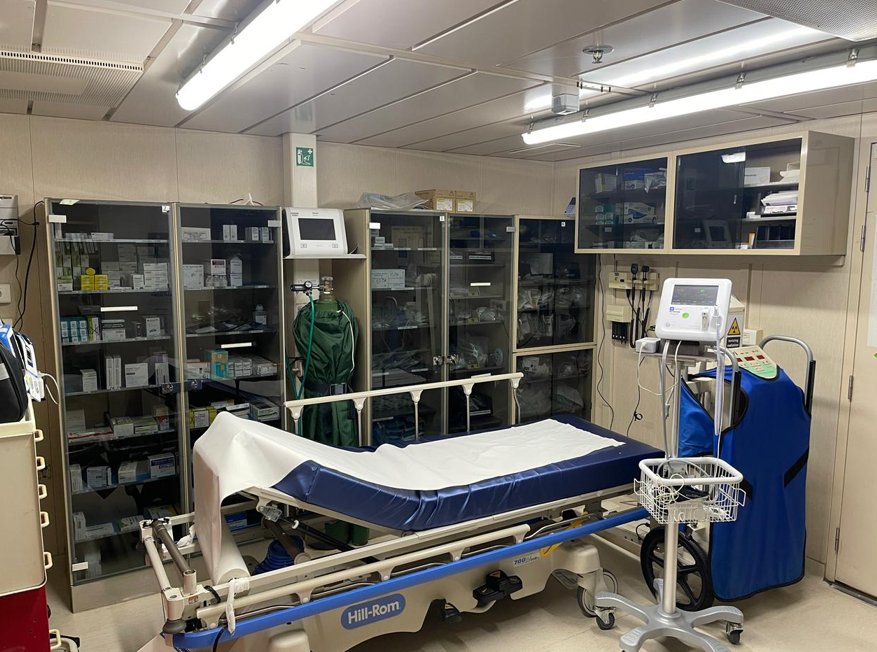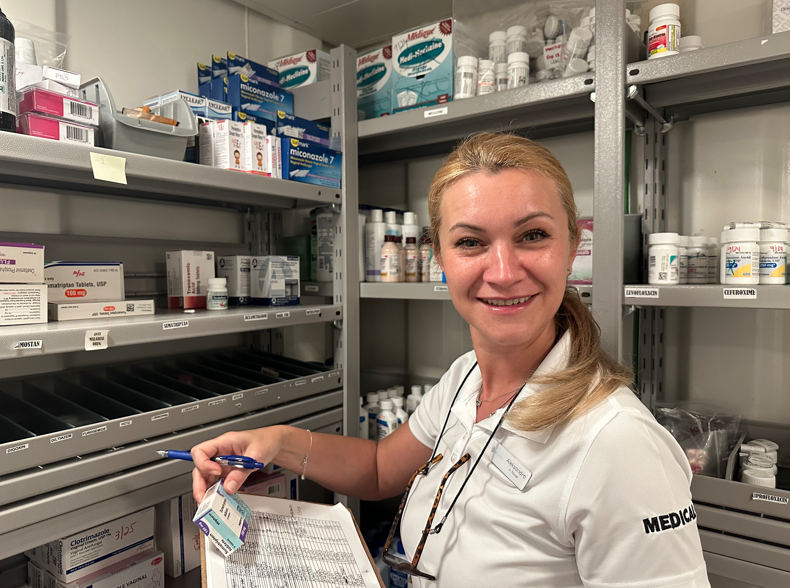Dr. Sebastiaan Kalwij, VIKAND Medical Director, explores why effective medical inventory management is critical aboard today’s cruise ships. With lives at stake and no pharmacies at sea, keeping the onboard medicine cabinet fully stocked, compliant, and cost-efficient is a cornerstone of passenger and crew safety.
Just as a town relies on its local pharmacy, a cruise ship depends on its onboard medical centre to provide essential care. Ensuring that this floating facility remains fully stocked, compliant with regulations, and financially sustainable is no small task — it demands a deep understanding of international health policies, supply chain logistics, and efficient inventory management.
Without a well-maintained medicine cabinet, ships risk being unprepared for emergencies, potentially endangering lives.
The Vital Importance of Onboard Medical Preparedness
Medical care at sea presents unique challenges. With no immediate access to hospitals or pharmacies, ships must be equipped to handle everything from routine illnesses to life-threatening emergencies. A carefully curated medical inventory forms just part of ensuring guests and crew members are taken care of and ensures prompt treatment, compliance with global maritime health standards, and efficient resource management.
From emergency response medications and antibiotics to cardiac care and chronic disease treatments, cruise ships must carry a broad range of supplies. Medical preparedness not only enhances passenger and crew health but also mitigates operational risks and legal liabilities.
Industry Standards: CLIA and ACEP Guidelines
The Cruise Lines International Association (CLIA) and the American College of Emergency Physicians (ACEP) set the medical standards that cruise ships must follow. These organisations establish protocols for onboard healthcare facilities, staffing, emergency protocols, infection control and more. They also mandate that vessels carry specific medications and medical equipment to address a wide range of potential health issues.
As ships navigate international waters and explore the far corners of our oceans, their medicine cabinet must be adequately stocked with supplies such as:
• Emergency Medications: Cardiac life support drugs, anaphylaxis treatments, respiratory support, and pain management, including opioids and non-opioids.
• Antibiotics & Antivirals: Broad-spectrum IV and oral antibiotics, antivirals for influenza, herpes or post exposure prophylaxis, and antifungals for systemic and topical use.
• Gastrointestinal Medications: Anti-nausea drugs, anti-diarrhoeal, IV fluids, and electrolytes.
• Cardiac Management: Beta-blockers, calcium channel blockers, anticoagulants, diuretics and thrombolytics
• Mental Health Management: Sedatives, anxiolytics, antipsychotics, and anti-seizure medications.
• Medical Supplies: Defibrillators, advanced cardiac life support (ACLS) equipment, oxygen, sutures, surgical supplies, insulin, and more.
• Emergency Obstetrics & Gynaecology Supplies: Sterile obstetric delivery kit, gynaecologic examination kit and emergency contraceptive pills
• Itinerary specific medication, such as malaria prophylaxis and treatment when visiting countries where malaria is endemic.
These guidelines ensure that vessels maintain a standard level of care regardless of their location.
Regulatory Compliance: Meeting International Health Requirements
In addition to industry guidelines, cruise operators must adhere to stringent international and national health regulations. The International Maritime Organization (IMO) mandates specific medical inventory requirements, ensuring that ships can provide adequate care at sea. Regular audits and inspections are necessary to confirm compliance, prevent stock shortages, and remove expired medications.
Ship operators must also adapt to changing regulations across different jurisdictions, requiring ongoing adjustments to onboard medical stock. Failure to comply with these legal frameworks can result in hefty penalties, reputational damage, and compromised passenger safety.
Managing Costs While Maintaining Readiness
Balancing cost control with medical preparedness is a significant challenge for cruise lines. Demand for certain medications can fluctuate unexpectedly — rough seas may increase the need for motion sickness treatments, while rare but critical drugs, such as fibrinolytics, must be available at all times despite their high cost and infrequent use.
Stocking too much medication leads to waste as drugs expire before use, while understocking puts passengers and crew at risk. Ships with frequent port stops can adjust inventory more flexibly, but long voyages require careful forecasting to ensure adequate supplies. Strategic procurement, bulk purchasing, and monitoring usage patterns help operators optimise costs without compromising medical readiness.
The Role of Expert Medical Inventory Management
Given these complexities, maritime health specialists such as VIKAND play a crucial role in ensuring ships remain medically prepared. VIKAND oversees medical inventories for ships, leveraging global supply chain networks to prevent shortages and ensure regulatory compliance.
Through direct collaboration with onboard medical teams, VIKAND optimises inventory levels based on factors such as ship itineraries, passenger demographics, and health risk assessments. This proactive approach reduces waste, prevents overstocking, and ensures cost-effective medication management by tracking expiration dates and recommending suitable alternatives when necessary.
Strengthening Maritime Health and Safety
An onboard medical supply isn’t just a regulatory requirement — it’s a fundamental pillar of maritime safety. With expert oversight, cruise lines can ensure that their medical facilities are always prepared to respond to emergencies, safeguard passenger and crew health, and meet industry standards with efficiency.
By integrating strategic inventory management with compliance monitoring and supply chain expertise, VIKAND helps ships navigate the challenges of medical preparedness at sea, ensuring smooth sailing for all onboard.
By Dr. Sebastiaan Kalwij
VIKAND Medical Director









